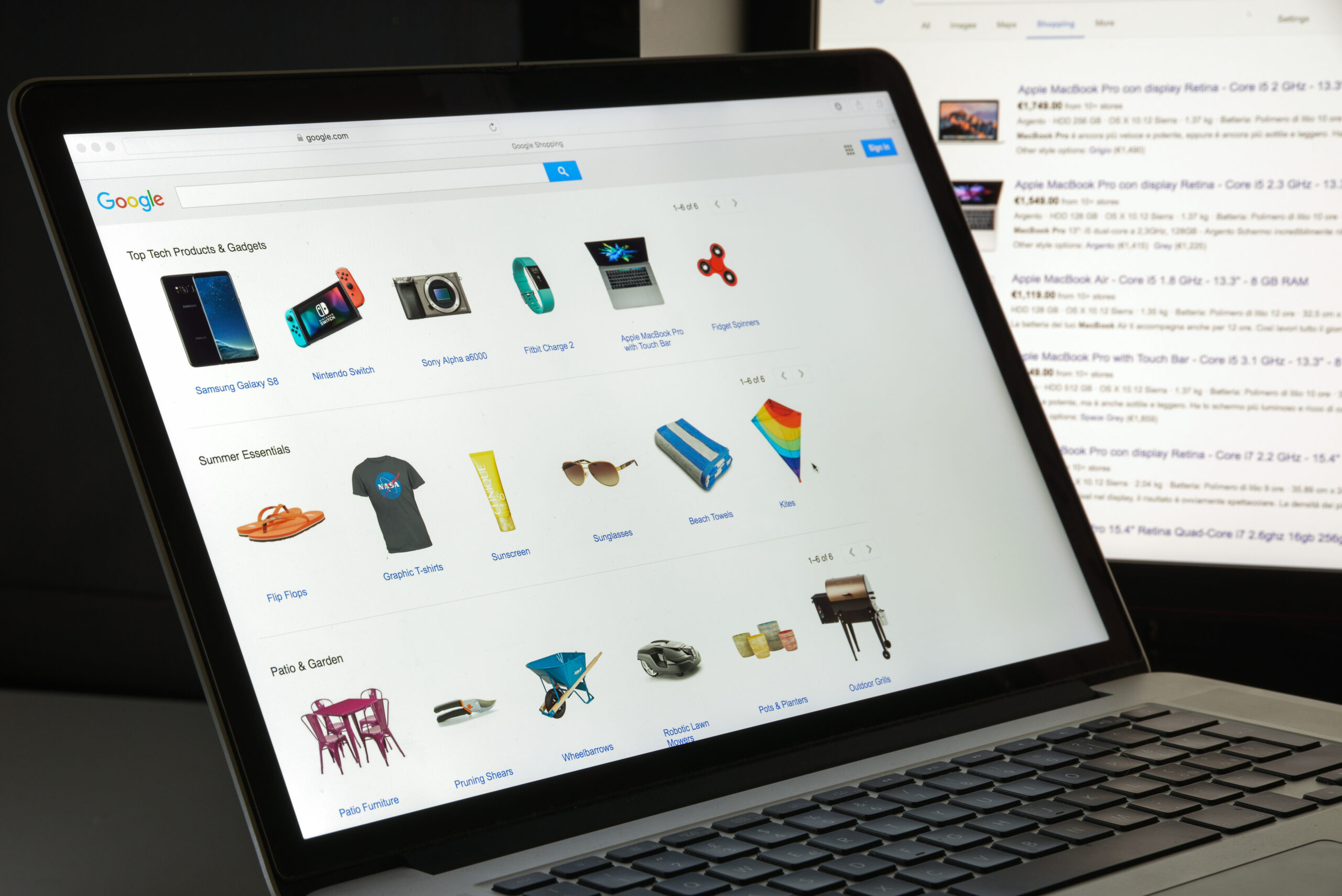While most retailers are connected to the major eCommerce marketplaces, some might be missing an opportunity to further improve their campaigns with ongoing optimisation of their product feed.
Optimising your product feed will help boost the results of your eCommerce marketing campaigns across all sales channels that rely solely on product data feeds to run. Platforms such as Google Shopping, Instagram Ads, Facebook Ads and Bing Shopping are all examples of such marketplaces.
A product feed that is accurate, complete and up-to-date is crucial to run effective campaigns on these channels. With the most optimal product information displayed, there can be a big uplift in overall visibility, conversion rates and sales volumes.
There are many levers that can be pulled by the modern marketer to optimise feeds, such as product titles, product descriptions and including attractive product images to capture the attention of potential buyers.
There are a lot of ways a feed can be optimised, but here are 5 quick wins that can make a big impact:
-
- Map Missing Attributes
-
- Product Title Optimisations
-
- Increase Product Category Depth
-
- Include GTIN attributes
- Automate where possible
1. Map Missing Attributes
eCommerce marketplaces, such as Google, Bing and Meta Shopping campaigns, use the data that’s contained in your product feed to run your campaign. The richer the data that you provide, the greater the chance that these channels’ algorithms will match and display your products to the right audience of potential buyers.
As the product feed is the only source of data that is used, populating as many attributes as possible is a key component of getting the most out of your advertising dollars. Such attributes for products include sizing, gender, materials and colour information, amongst many others.
The more attributes, the better the matching capabilities to the right buyers. Missing attributes makes it harder to match with more specific, ‘long tail’ searches. These searches can be an indication of someone who is ready to buy and typically have a higher conversion rate into sales.
Detailed product descriptions are very important to improve overall campaign performance and, as customers can find the right product for their search term quickly and easily, it also improves the overall journey and customer experience.
2. Product Title Optimisations
Ads can perform better by the inclusion of certain keywords within the product titles.
Potential customers use a variety of keyword search combinations and synonyms in their queries, and better reflecting these keywords will improve performance. Conversion data will tell you what queries are driving revenue, and this may be anything from brand names through to any product attributes or variants.
For optimised titles, include the most relevant keywords at the start and make sure they accurately reflect the product. This will make it easier for shoppers to find the product they are looking for, grab their attention and encourage them to click on your product listing.
As an example of how this activity can directly impact your business, one of FeedOps’ retail clients doubled their impressions and clicks through product title optimisation alone. After only 30 days, they saw a 366% increase in revenue with a 155% uplift on ROAS.
3. Increase Product Category Depth
Google, in particular, strongly recommends that you have at least 3 layers of category depth. It is therefore best practice to have at least this category hierarchy in your feed. Setting up in this way gives Google a much richer source of keyword data to work with.
In general, Google will prioritise the SKU’s with that level of depth over those that don’t have it. So, having this correct structure in place typically means much better visibility across the entire platform, as your products will show for a wider, broader range of product searches that are used by potential customers.
This will also give your ads the best chance of increasing your visibility in Google’s Free Product Listings, which are the free, organic version of Google Shopping. Appearing in organic searches will improve your overall revenue without costing you any more.
4. Include GTIN attributes (unique product identifiers)
The Global Trade Item Number, or GTIN, is the unique and globally recognized product identifier. These are also called Unique product identifiers (UPIs) or Unique Product Codes (UPCs) and they basically help the advertising platforms classify and display products.
These are really important, particularly within Google Shopping. Those products that are submitted without any GTIN or UTI can be difficult to classify, so they will likely be disapproved or may not be eligible for all of the available Shopping programs or features.
With a product feed that includes GTIN’s, the eCommerce marketplaces know exactly what they are selling and can more accurately use their algorithm and historical data to work out the right buyers to show these products to. With this extra layer of data, it also opens the door to appear on a wider range of channels, such as YouTube.Therefore, it is strongly recommended to include product unique identifiers in your feed, where applicable.
5. Automate where possible
Using a product feed management tool, like FeedOps, will ensure that product data remains accurate and up to date, as well as identifying areas for improvement to achieve better results.
Many websites have inventory that changes on a regular basis, so automating your product feed can save you time, energy and money. For retailers that have many SKU’s, handling these large volumes of data could become very time consuming and problematic. Even if you have your feed completely optimised today, you may add a whole raft of new products tomorrow that will also need optimisation. Automation helps you identify these products and makes suggestions about what to optimise.
For retailers looking to advertise across multiple marketplaces, such as Google Shopping, Microsoft Shopping, Meta etc, automation can help by syncing optimisations from one channel to another. As these platforms operate in a very similar manner, you can minimise duplication of activities while ensuring feeds are optimal across all channels.
Automation can help businesses scale faster, reduce human errors, save time and, ultimately, generate better returns from your shopping campaigns.
In summary, providing as much valuable information as possible in your feed through data feed optimisation, you will make your listings more relevant for your potential buyers. Product data will determine the success of your campaigns, as it’s the only information that is used in shopping campaigns.
Without comprehensive product information, it’s much harder for the marketplace algorithms to match to the right target customers, and this inefficiency will cost you money. On the flip side, a fully optimised feed means your ad will display more frequently, with more conversions for less money.
Product feed optimisation is a constant activity that works in conjunction with overall campaign optimisation. It is therefore recommended that it’s given the same consideration as other paid campaign optimisation activities.
FeedOps are product feed data specialists with a full suite of product feed optimisation tools to drive better eCommerce campaign performance.
To learn more about how feed optimisation can work for you, please get in touch.


